How the new Latin American left is trying to redefine its relationship with the armed forces
The military is no longer a threat to the governments of the region, but there are still tensions when it comes to defining their mission, power and resources, particularly in countries marked by violence, such as Colombia and Mexico
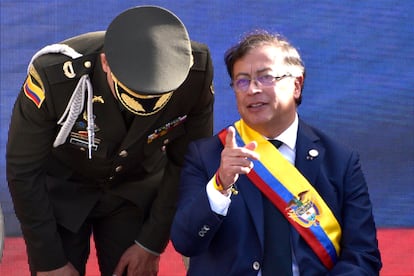
The image was striking and the message unprecedented. On Friday, the president of Colombia, Gustavo Petro, presented a new military leadership, made up of five men and a woman, who will head the deputy police force. The new leadership is part of his policy to foster “love between the public forces and society.” Petro made it clear that his priorities will be the fight against corruption and ensuring the military respects fundamental rights. The reform comes in a country that has only just emerged from more than half a century of armed conflict.
Colombia’s plan comes as other leftist governments in Latin America also seek to redefine their relationship with the armed forces, which have historically been used to persecute the left. But while the miliary no longer poses a threat to political stability, there are still tensions when it comes to defining their mission, power and resources.
In Mexico, for example, President Andrés Manuel López Obrador, who is the first leftist leader in the country’s recent history, is also trying to reorganize the military structure. Last Monday, he announced a decree that will make the National Guard, the institution that is the “heir” to the Federal Police, dependent on the army. This step represents the umpteenth concession to the armed forces, which are already assigned the management of large infrastructure projects such as the Mayan Train.
Colombia’s military settlement
In 1957, after the fall of Colombia’s military junta, the armed forces reached an agreement in which they agreed not to become involve with politics in exchange for overseeing national security without government oversight. Thirty years ago, the arrangement was adjusted to allow for civilian defense ministers, and since then, it has remained unchanged. As a results, Colombia’s arned forces have been on a constant war footing since at least the mid-1970s. In this period, the military has fought against leftist guerillas, who were often funded by illicit activities, such as drug trafficking.
In the fight against guerillas, the military became more politically powerful. The size of Colombia’s standing army rose to become the second largest in the region, after Brazil. The armed forces took a large slice of the national budget; became major recipients of US aid; carried out operations more fit for police officers or civil guards, such as drug seizures; and distegarded the international laws on human rights, on the grounds that it put them at a disadvantage against criminal groups.
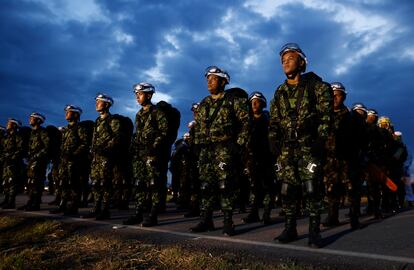
It was this culture that led to the summary executions of innocent civilians between 2002 and 2008. These civilians or “false positives” were listed as guerrillas killed in combat, and were used as proof of performance by military units and to collect “kill fees” awarded by the then-government of president Álvaro Uribe. The hunt for domestic enemies – in line with the anti-communist thinking of the day – remains a key element in the Colombian armed forces.
Indeed, during the peace negotiations with FARC guerrillas, then-president Juan Manuel Santos proposed a multi-mission post-conflict army, in which troops would not just focus on national security, but also development, protecting the environment and international cooperation. This encountered internal resistance that flared up a few years later, with the conflict regaining strength and Iván Duque’s right-wing government coming to power with a more hardline military leadership.
In May 2020, Colonel Pedro Rojas Guevara, head of the army doctrine center, requested to be discharged. He said that his commander, General Eduardo Zapateiro, had prohibited the dissemination and implementation of the doctrine. The response was that the doctrine would continue to be reviewed, adjusted and implemented.
President Gustavo Petro has not defined a policy for the military forces. He faces internal divisions, the distrust of those remain in a Cold War mindset and is the first president elected by the left in Colombia who lacks a clear government security policy.
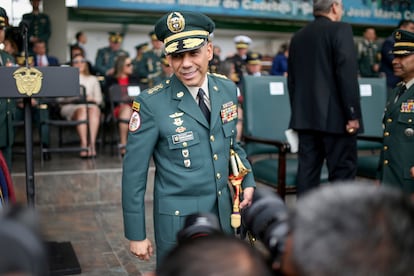
After Zapateiro’s resignation last Friday, Petro appointed Iván Velásquez, a renowned expert in human rights and the fight against corruption, as defense minister. When he announced the appointment, he suggested that the military could be used to help build infrastructure. “We will build irrigation districts with the army and country houses and neighborhood roads with the soldiers of the country. Army, society and production can unite in a new indestructible social ethic,” he said. “Success is not that there are more deaths but that there are fewer deaths, fewer massacres and more freedoms,” he added.
The Argentine example
While Colombia today is in a stage of transition, Argentina went through an even more difficult process following its military dictatorship. “It was a long road, which linked the evaluation of the dictatorship with a process of truth, justice and memory,” said Argentine Defense Minister Jorge Taiana. “These three tools allowed the transformation of the armed forces that gradually became committed to democracy.”
In 1984, months after the return to democracy, the leaders of the dictatorship sat before an ordinary court and received life sentences. And despite pressure from the military, the government of Raúl Alfonsín published the report Nunca Más (Never Again), with the testimonies of almost 9,000 victims of state terrorism.
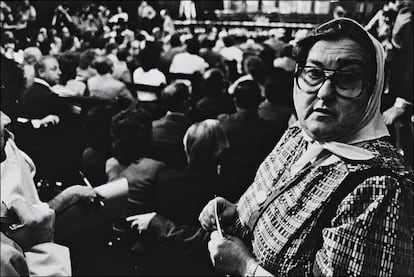
Between 1987 and 1990 there were four military uprisings by the mutineers known as the Carpintadas. Alfonsín gave in to the pressure with the enactment of the Due Obedience and Full Stop laws: the former gave amnesty to middle and lower-ranking repressors; the latter mandated the end of investigation and prosecution of people accused of political violence during the dictatorship. President Carlos Menem went a step further: between 1989 and 1990, he pardoned 220 soldiers, among them the leaders convicted in the Trial of the Juntas, which prosecuted the members of the dictatorial government.
As the people condemended the army’s impunity, Menem drained the armed forces of resources. “At the end of the 1990s, the cycle that began in 1930 of the military as a shock force against the popular movement came to an end,” said Taiana. Military influence disappeared completely from Argentine political life. In 2003, then-president Néstor Kirchner revived that debate on impunity. He annulled pardons and repealed pardon laws. “Justice was carried out through ordinary courts, there were no special commissions, no truth commissions, it was Argentine justice that established the responsibilities” of the repressors,“ he said.
As of March, a total of 1,058 people had been convicted of crimes against humanity in 273 sentences, according to the latest survey by the Attorney General’s Office. The armed forces, meanwhile, participate in eight peacekeeping missions around the world. Taiana has given assurance that they are also re-equipping themselves to add “deterrent” capacity after “a long period of neglect.”
But it is a completely different story in Brazil. The Brazilian Ministry of Defense was created in 1999, more than a decade after the end of the military dictatorship (1964-1985) with the aim of expanding civilian power over the armed forces. During governments of the Workers’ Party (PT), the defense ministers were civilians, but the military gained ground in the internal structure of the government. With the arrival of Michel Temer to power in 2016, the tradition of civilian defense ministers was disrupted, and this was consolidated with the strong militarization of the Jair Bolsonaro government.

The current president, a captain in the reserves, not only kept the Ministry of Defense in the hands of the military, but also endowed them with others of important ministries, such as Health. Another general, Walter Braga Netto, became Chief of Staff, a putative prime minister, and is now his vice-presidential candidate.
The trend towards militarization, however, is not only a prerogative of the extreme right in Latin America. In Mexico, López Obrador plans to transfer the Mexican National Guard to the offices of the Secretary of Defense in a move that has upset progressives in the country. As several analysts point out, the concessions made to the armed forces during that mandate will be difficult to reverse. What’s more, the military is gaining more power in a country where, according to the government’s count, more than 100,000 people disappeared in May. This figure skyrocketed from 2006, when then-president Felipe Calderón launched his war against organized crime with military forces at the forefront. A strategy that, despite his current position on the military, was then criticized by López Obrador.
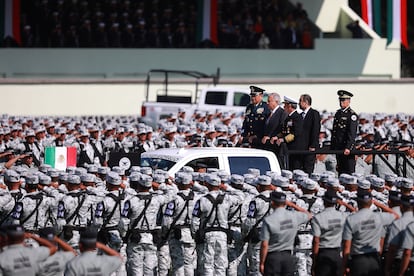
In Venezuela, the Chavista government has historically used the army for its own benefit. Late president Hugo Chávez, a lieutenant colonel who built his career from the barracks, made the Bolivarian National armed forces (BNAF) a backbone of his political project. Over the years, the army and the police forces became the main guardian of the Bolivarian revolution, and, despite some notable defections, the troops have remained faithful to the current president, Nicolás Maduro, a civilian who governs surrounded by soldiers.
Chávez’s successor, however, is a representative of “the pink tide” (a political wave of left-wing governments at the beginning of the 21st century) and the new representatives of the Latin American left are not only far from Chavista but have already shown signs of wanting take another path entirely. Chilean President Gabriel Boric, for example, also faces the challenge of establishing a new relationship with the armed forces in a country where the military had total control of national political life for decades. Since the Chilean dictatorship ended in March 1990, there has been a slow path to reign in the power of the military. Even still, the leader of Chile’s military junta Augusto Pinochet remained leader of the army until 1998, when he became a senator for life.
That same year, however, marked the beginning of a new era. Under the government of socialist president Ricardo Lagos (2000-2006), the government was given greater control over the army: the president could now dismiss the commanders-in-chief of the armed forces. Michelle Bachelet, a victim of the dictatorship, was also appointed to head the Ministry of Defense.

Today, neither the army nor the police enjoy popular support in the region. Both institutions have had to face complaints of corruption and, following the social unrest of 2019, accusations of human rights violations against protesters. It is a situation that has pushed the political class to talk about institutional reforms.
President Gabriel Boric, who took office last March, has used the military to control the violence in La Araucanía – where the conflict over Mapuche lands is being waged – and in the north, where there is a migration crisis. The president also appointed Salvador Allende’s granddaughter, Maya Fernández, as his defense minister. This deeply symbolic gesture suggests the beginning of a new chapter. From Chile to Colombia, the new Latin American left has opened a new political era, one that may also redefine the role of the military.
Tu suscripción se está usando en otro dispositivo
¿Quieres añadir otro usuario a tu suscripción?
Si continúas leyendo en este dispositivo, no se podrá leer en el otro.
FlechaTu suscripción se está usando en otro dispositivo y solo puedes acceder a EL PAÍS desde un dispositivo a la vez.
Si quieres compartir tu cuenta, cambia tu suscripción a la modalidad Premium, así podrás añadir otro usuario. Cada uno accederá con su propia cuenta de email, lo que os permitirá personalizar vuestra experiencia en EL PAÍS.
¿Tienes una suscripción de empresa? Accede aquí para contratar más cuentas.
En el caso de no saber quién está usando tu cuenta, te recomendamos cambiar tu contraseña aquí.
Si decides continuar compartiendo tu cuenta, este mensaje se mostrará en tu dispositivo y en el de la otra persona que está usando tu cuenta de forma indefinida, afectando a tu experiencia de lectura. Puedes consultar aquí los términos y condiciones de la suscripción digital.
More information
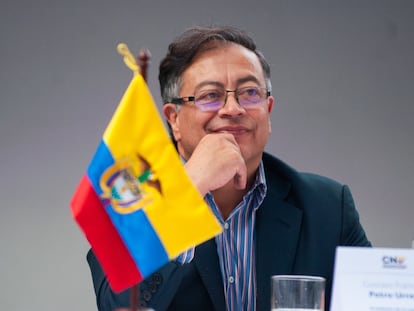
Colombia and the new Latin American left
Últimas noticias
‘How does it feel to be a failure?’: Elizabeth Berkley’s journey from ‘Showgirls’ ridicule to vindication
The story of the Málaga virus: The code that haunted Google’s cybersecurity center director for 30 years
The impact of Ecuador’s mega-prison: A polluted river, cleared forests and military checkpoints
Corinne Low: ‘I’m more concerned about the female happiness gap than the gender wage gap’
Most viewed
- The low-cost creative revolution: How technology is making art accessible to everyone
- Christian Louboutin: ‘Young people don’t want to be like their parents. And if their parents wear sneakers, they’re going to look for something else’
- All the effects of gentrification in one corner of Mexico’s Colonia Roma
- Liset Menéndez de la Prida, neuroscientist: ‘It’s not normal to constantly seek pleasure; it’s important to be bored, to be calm’
- December Social Security and SSI payments: Dates, double checks and the 2026 COLA increase








































